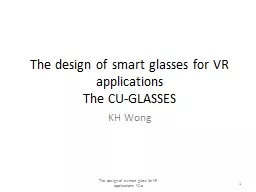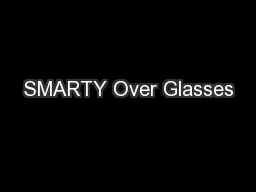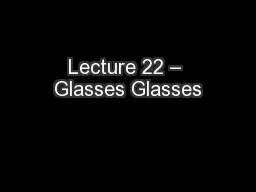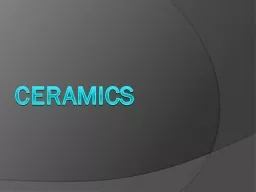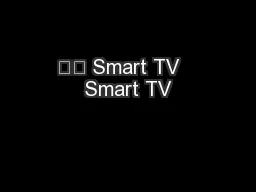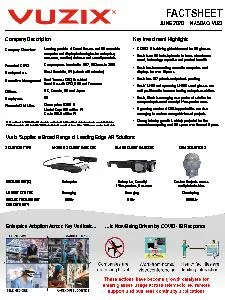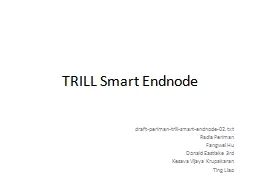PPT-The design of smart glasses for VR applications
Author : giovanna-bartolotta | Published Date : 2018-01-06
The CUGLASSES KH W ong The design of a smart glass for VR applications V1a 1 Introduction Be able to overlay images or text to our normal view Simple low cost and
Presentation Embed Code
Download Presentation
Download Presentation The PPT/PDF document "The design of smart glasses for VR appli..." is the property of its rightful owner. Permission is granted to download and print the materials on this website for personal, non-commercial use only, and to display it on your personal computer provided you do not modify the materials and that you retain all copyright notices contained in the materials. By downloading content from our website, you accept the terms of this agreement.
The design of smart glasses for VR applications: Transcript
Download Rules Of Document
"The design of smart glasses for VR applications"The content belongs to its owner. You may download and print it for personal use, without modification, and keep all copyright notices. By downloading, you agree to these terms.
Related Documents

